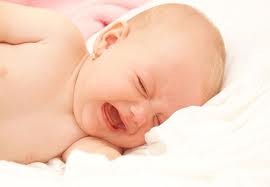 My mother gave birth to my sister and me in the 70ties in Germany. Listening to her story about my own start to life and the procedures and mindsets that were common practise back then, brought tears to my eyes. Those weren´t tears of joy.
My mother gave birth to my sister and me in the 70ties in Germany. Listening to her story about my own start to life and the procedures and mindsets that were common practise back then, brought tears to my eyes. Those weren´t tears of joy.
Sympathizing with my mum provoked feelings of regret, fear, helplessness and sadness about the way in which newborn babies would be “handled” back then. In my case all babies got taken away to a separate ” baby sleeping room”. The hospital protocol allowed for 20min breastfeeding time – only after the mums had washed their hands with sterile solution . After 20min us babies got weighed and if we hadn´t gained the scheduled weight, nurses would take us to the baby room and feed us the bottle. Unfortunately, I was too weak to drink fast enough on my mum´s breast to reach the set goal within 20min… I can only imagine what impact the time in hospital had on me throughout my whole life – being separated over and over again and not knowing my mother´s scent in those first very important hours and days of a baby´s lifeand this is only one of the examples she described.
The following article published in ScienceDaily highlights the physiological impact that separating infants from their mothers has on the baby.
New evidence shows that separating infants from their mothers is stressful to the baby.
A woman goes into labor, and gives birth. The newborn is swaddled and placed to sleep in a nearby bassinet, or taken to the hospital nursery so that the mother can rest. Despite this common practice, new research published in Biological Psychiatry provides new evidence that separating infants from their mothers is stressful to the baby.
It is standard practice in a hospital setting, particularly among Western cultures, to separate mothers and their newborns. Separation is also common for babies under medical distress or premature babies, who may be placed in an incubator. In addition, the American Academy of Pediatrics specifically recommends against co-sleeping with an infant, due to its association with Sudden Infant Death Syndrome, or SIDS.
Humans are the only mammals who practice such maternal-neonate separation, but its physiological impact on the baby has been unknown until now.
Researchers measured heart rate variability in 2-day-old sleeping babies for one hour each during skin-to-skin contact with mother and alone in a cot next to mother’s bed. Neonatal autonomic activity was 176% higher and quiet sleep 86% lower during maternal separation compared to skin-to-skin contact.
Dr. John Krystal, Editor of Biological Psychiatry, commented on the study’s findings: “This paper highlights the profound impact of maternal separation on the infant. We knew that this was stressful, but the current study suggests that this is major physiologic stressor for the infant.”
This research addresses a strange contradiction: In animal research, separation from mother is a common way of creating stress in order to study its damaging effects on the developing newborn brain. At the same time, separation of human newborns is common practice, particularly when specialized medical care is required (e.g. incubator care). “Skin-to-skin contact with mother removes this contradiction, and our results are a first step towards understanding exactly why babies do better when nursed in skin-to-skin contact with mother, compared to incubator care,” explained study author Dr. Barak Morgan.
More research is necessary to further understand the newborn response to separation, including whether it is sustained response and whether it has any long-term neurodevelopmental effects.
However, skin-to-skin contact has known benefits, and certainly, most would agree that unnecessarily stressing a newborn is unacceptable. Thus, as further evidence emerges, the challenge to doctors will be to incorporate skin-to-skin contact into routine treatment whilst still safely providing the other elements of newborn medical care.
Source: http://www.sciencedaily.com/releases/2011/11/111102124955.htm
